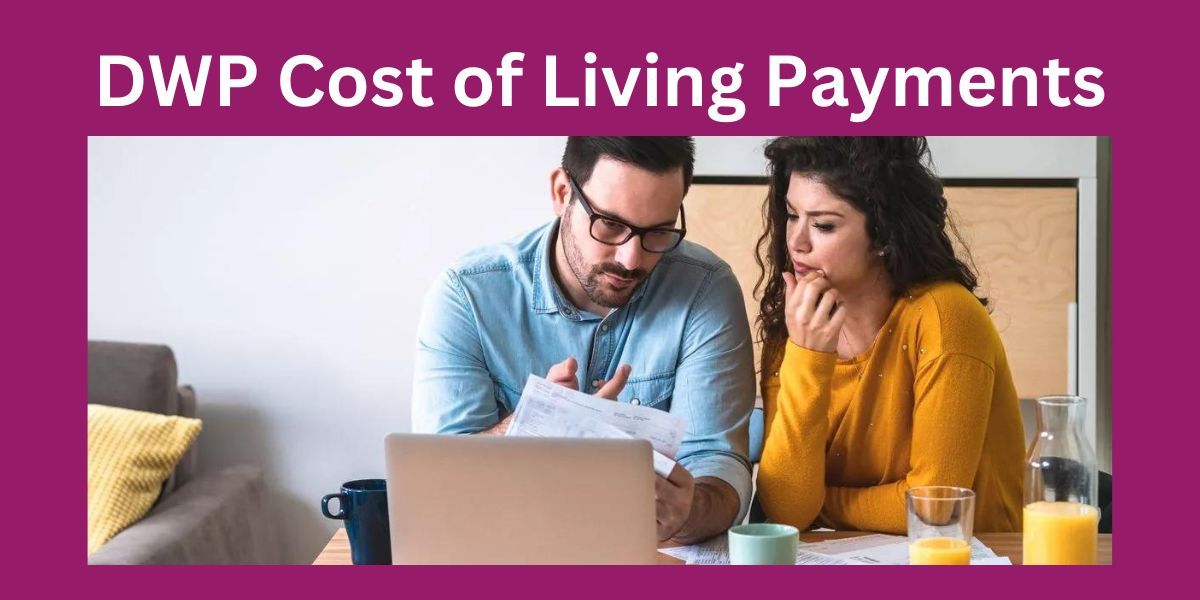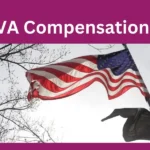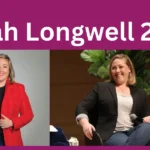Are you ready for some good news? The DWP (Department for Work and Pensions) is bringing back the Cost of Living Payments, but there’s a twist this time around. If you’ve relied on these payments before, or if you’re wondering whether you might be eligible this year, there’s a lot to unpack. The government has made some changes, and understanding these could mean the difference between getting that extra financial boost or missing out entirely. So, grab a cup of tea, sit back, and let’s dive into what’s new with the DWP Cost of Living Payments!
What Are DWP Cost of Living Payments?
A Quick Refresher on What It’s All About
Let’s start with the basics, shall we? The DWP Cost of Living Payments are government-provided funds designed to help people manage the rising cost of living. With inflation biting hard, these payments have been a lifeline for many households struggling to make ends meet. They’re not loans, so you don’t have to pay them back—think of them as a helping hand when you need it the most.
The Purpose Behind the Payments
Why does the government dish out these payments? Simply put, they’re here to alleviate financial stress. Whether it’s skyrocketing energy bills, increased grocery prices, or just the general squeeze on your budget, these payments are intended to ease some of that burden.
The Big Twist: What’s Different This Time?
A Shift in Focus: Targeted Support
Here’s where things get interesting. This year, the DWP has introduced some changes that might catch you off guard. Previously, the payments were fairly broad in their reach, but now they’ve become more targeted. The government is focusing on those who need it the most—meaning, if you’re in a particularly vulnerable group, your chances of receiving the payment might be higher.
New Eligibility Criteria
The twist comes in the form of revised eligibility criteria. Unlike in previous years, where a broad swath of people qualified, the government has now tightened the rules. This means you’ll need to pay close attention to the new guidelines to see if you still qualify.
What Are the New Criteria?
You’re probably wondering—what are these new criteria? Good question. The government has outlined specific conditions you must meet to be eligible for the Cost of Living Payment this time around. These include:
- Income Thresholds: Your income level will be scrutinized more closely. There’s now a stricter income cap that you must fall under to qualify.
- Benefit Requirements: You need to be receiving certain benefits to be eligible. These include Universal Credit, Pension Credit, and certain types of Disability Benefits.
- Household Circumstances: Your household’s overall financial situation, including savings and investments, will be considered. This is a new addition and could impact your eligibility if you have significant savings.
How to Check If You’re Eligible
Step-by-Step Guide to Checking Your Eligibility
Wondering how you can check if you’re in the running for the Cost of Living Payment? Let’s walk through the steps.
Log In to Your Government Gateway Account
First things first, you’ll want to log in to your Government Gateway account. If you don’t have one, now’s the time to set it up. It’s your portal to managing benefits and checking your eligibility for various payments.
Review Your Current Benefits
Once logged in, review the benefits you’re currently receiving. The key here is to see if you’re getting any of the qualifying benefits. If you’re not, you might need to explore whether you’re eligible to apply for them.
Use the Eligibility Checker Tool
The government has provided an online tool that can help you quickly assess your eligibility. It’s straightforward—just input your details, and it will give you a good idea of whether you might qualify.
Consult With a Benefits Advisor
If you’re still unsure, or if your situation is a bit complicated, consulting with a benefits advisor might be the way to go. They can provide personalized advice based on your specific circumstances.
What If You Don’t Qualify?
Alternatives to the Cost of Living Payment
So, what happens if you don’t qualify under the new rules? Don’t fret just yet—there are other forms of support available.
Explore Other Government Grants
The UK government offers various grants aimed at helping low-income households. These include the Warm Home Discount and Cold Weather Payments, which might be available to you even if you don’t qualify for the Cost of Living Payment.
Local Council Assistance
Your local council may also have discretionary funds available to help with essential costs. These are often less publicized but can be a vital resource if you’re struggling financially.
Charitable Organizations
There are numerous charities out there dedicated to helping people in financial difficulty. Organizations like the Trussell Trust and Turn2us offer support in the form of grants, food banks, and financial advice.
How to Make the Most of Your Payment
Tips for Stretching Your Cost of Living Payment
If you do qualify and receive the Cost of Living Payment, it’s important to use it wisely. Here are some tips to help you make the most of that extra cash.
Prioritize Essential Bills
It might be tempting to splurge, but prioritizing essential bills like rent, utilities, and groceries will help you avoid getting into further financial trouble down the line.
Build an Emergency Fund
If you’re able, set aside a portion of the payment into an emergency fund. This can be a lifesaver if unexpected expenses pop up.
Avoid Unnecessary Debt
Use the payment to pay down high-interest debt if you can. This will save you money in the long run by reducing the amount of interest you pay over time.
The Impact on Different Groups
Who Benefits the Most?
Now, let’s talk about who stands to gain the most from these changes.
Low-Income Households
Low-income households are the primary beneficiaries of the Cost of Living Payments. The revised criteria are designed to ensure that those who need it most—often those on the lowest incomes—get the financial help they require.
Pensioners
Pensioners are another group that’s likely to see some benefit. With the cost of living rising, many pensioners are finding it harder to make ends meet. The Cost of Living Payments can help alleviate some of the financial pressures faced by this group.
Disabled Individuals
Disabled individuals who receive qualifying benefits are also set to benefit. The payments can help cover the additional costs that often come with disability, such as healthcare and mobility aids.
The Application Process: What You Need to Know
Applying for the Cost of Living Payment
So, how do you actually go about applying for the Cost of Living Payment? Here’s what you need to know.
Automatic Payments vs. Application-Based
For some, the process will be automatic. If you’re already receiving the qualifying benefits, the payment might be deposited directly into your bank account. However, if your circumstances have changed, you might need to apply.
Key Dates to Remember
Keep an eye out for the government’s announcements on key dates. These will include when the payments will be made and any deadlines for applications.
Required Documentation
Ensure you have all the necessary documentation ready. This might include proof of benefits, bank statements, and identification documents.
The Broader Economic Impact
How These Payments Affect the Economy
You might be wondering—how do these payments impact the broader economy? Let’s take a quick look.
Stimulating Local Economies
When people receive these payments, they tend to spend them locally. This can help stimulate local economies, particularly in areas where financial hardship is more prevalent.
Reducing Poverty Levels
By targeting the most vulnerable groups, these payments can help reduce poverty levels. This has long-term benefits, including improved health outcomes and reduced strain on social services.
Potential Drawbacks
However, there are potential drawbacks. Some critics argue that these payments can contribute to inflation if not managed carefully. It’s a delicate balance that the government needs to maintain.
Public Reactions: What Are People Saying?
Mixed Feelings Across the Nation
Public opinion on the Cost of Living Payments is mixed. Some people are incredibly grateful for the support, while others feel that more needs to be done.
Positive Feedback
Many recipients have expressed relief at receiving the payments, stating that it has helped them cover essential costs during difficult times.
Criticism and Concerns
On the other hand, some people believe the payments are not enough to offset the rising cost of living. There are also concerns about the fairness of the new eligibility criteria, with some feeling that they’ve been unfairly excluded.
What’s Next for Cost of Living Support?
Future Changes on the Horizon?
So, what does the future hold for Cost of Living Payments? It’s hard to say for sure, but there are a few possibilities.
Potential for Further Adjustments
The government may continue to tweak the eligibility criteria as the economic situation evolves. This could mean more people qualifying in the future—or, conversely, fewer people if the criteria are tightened further.
Other Forms of Support
We might also see the introduction of new forms of support, particularly if the cost of living continues to rise. The government has already hinted at additional measures, so it’s worth staying informed.
Keeping Up-to-Date
To make sure you don’t miss out on any future payments or support, it’s crucial to keep up-to-date with government announcements. Subscribe to updates or regularly check the official DWP website.
Conclusion
The DWP Cost of Living Payments are back, but with a twist that could affect whether you qualify. With new eligibility criteria focusing on the most vulnerable, it’s more important than ever to check your status and ensure you’re getting the support you need. Whether you’re struggling with rising costs or just trying to stay ahead, these payments could be the financial lifeline you’ve been waiting for. But remember, the key is to stay informed and proactive—don’t let these changes catch you off guard.
FAQs
1. What are the new eligibility criteria for the DWP Cost of Living Payments?
The new criteria include stricter income thresholds, specific benefit requirements, and a review of your household’s overall financial situation, including savings.
2. How can I check if I’m eligible for the Cost of Living Payment?
You can check your eligibility by logging into your Government Gateway account, reviewing your benefits, and using the online eligibility checker tool provided by the government.
3. What if I don’t qualify for the Cost of Living Payment?
If you don’t qualify, explore other government grants, local council assistance, and charitable organizations that offer support for those in financial difficulty.
4. Will the Cost of Living Payment be paid automatically?
For some recipients, the payment will be automatic if they are already receiving qualifying benefits. However, if your circumstances have changed, you might need to apply manually.
5. How do the Cost of Living Payments impact the economy?
These payments help stimulate local economies by increasing consumer spending and can reduce poverty levels, though they may also contribute to inflation if not carefully managed.










